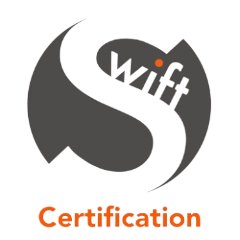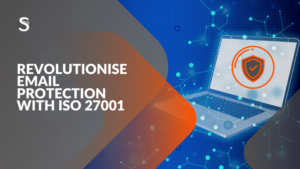In today’s digital age, businesses of all sizes are increasingly reliant on data and information technology systems. With this reliance comes a growing risk of cyber threats, data breaches, and compliance challenges. To mitigate these risks and protect sensitive data, businesses need robust information security management systems (ISMS) in place. ISO 27001, the internationally recognised standard for information security, has been updated to address the evolving landscape of cybersecurity threats.
Adopting the new version of ISO 27001 is not just a regulatory necessity but a strategic move that can enhance business resilience, customer trust, and operational efficiency. In this blog post, we will explore the importance of the updated ISO 27001 standard and how implementing it will have a positive impact on businesses in various ways.
1. The Evolution of Cybersecurity and the Importance of ISO 27001
The frequency and sophistication of cyber threats have significantly increased in recent years. The COVID-19 pandemic accelerated digital transformation, and remote work made organisations more vulnerable to security breaches. Simultaneously, businesses handle more sensitive data, and regulatory frameworks governing data protection are becoming stricter. These trends highlight the critical importance of having a robust ISMS, as outlined in the ISO 27001 standard.
ISO 27001:2013 was widely adopted for information security management. However, given the rapidly changing cyber landscape, the standard needed updates to remain relevant and comprehensive. The ISO 27001:2022 update introduces new controls that are better aligned with today’s cybersecurity challenges. The new version also integrates more advanced risk management practices and emphasises ongoing improvement and adaptability to new threats.
For businesses, adopting this updated standard means staying ahead of potential security threats and preparing for the future. Those that fail to evolve with these changes risk falling behind, both in terms of security measures and compliance.
2. Key Changes in the Updated ISO 27001:2022
Before delving into the specific benefits of adopting ISO 27001:2022, it’s essential to understand what has changed in the standard. Some of the most notable updates include:
- Revised Control Set: The number of controls in Annex A has been consolidated from 114 to 93. These controls have been categorised into four groups: Organisational, People, Technological, and Physical controls. This makes it easier for organisations to identify the appropriate security measures.
- Introduction of New Controls: The 2022 update introduces 11 new controls that focus on current security challenges. These include areas like threat intelligence, cloud security, and data masking—elements that reflect modern-day risks such as cloud vulnerabilities, third-party risks, and more sophisticated cyberattacks.
- Streamlined Structure: The new structure follows a similar high-level structure (HLS) to other ISO standards like ISO 9001 and ISO 45001, making it easier for businesses to integrate multiple management systems, such as quality management and occupational health and safety.
These changes make the updated ISO 27001 more flexible, adaptive, and effective in managing today’s risks. Businesses that adopt these new controls will be better equipped to deal with emerging threats and regulatory changes.
3. The Business Benefits of Implementing ISO 27001:2022
Adopting the new ISO 27001 standard is more than a matter of compliance or risk management—it offers a wide array of business benefits that contribute to long-term success and growth. Below are several key advantages:
3.1. Enhanced Data Protection
The most apparent benefit of ISO 27001 is that it provides businesses with a comprehensive framework for protecting sensitive data. The 2022 update’s new controls—such as those covering cloud security and encryption—are tailored to address the modern threats that businesses face.
By implementing ISO 27001:2022, businesses can significantly reduce the risk of data breaches, unauthorised access, and data loss. This is particularly critical given the increasing number of incidents related to ransomware, phishing, and insider threats. Protecting data not only avoids legal ramifications but also safeguards the company’s reputation.
3.2. Improved Regulatory Compliance
With the rising complexity of data privacy regulations, such as the GDPR (General Data Protection Regulation) in Europe or the CCPA (California Consumer Privacy Act) in the United States, businesses are under increasing pressure to ensure that their data security practices meet legal requirements. The updated ISO 27001 standard is better aligned with these regulations, meaning that businesses that implement it will find it easier to comply with various legal frameworks.
Non-compliance can lead to significant fines and penalties. For instance, under the GDPR, organisations can be fined up to 4% of their global annual revenue. By ensuring ISO 27001 compliance, businesses can avoid these costly consequences and have peace of mind that their security practices align with legal obligations.
3.3. Stronger Customer Trust and Brand Reputation
In today’s business environment, trust is everything. Customers and partners want to do business with companies they believe will protect their sensitive information. ISO 27001 certification serves as a strong indicator of a business’s commitment to security and data privacy.
When potential customers see that a business is ISO 27001 certified, it sends a clear signal that the organisation takes security seriously and follows internationally recognised best practices. This can be a competitive advantage, helping businesses differentiate themselves from competitors who may not have the same level of security maturity.
3.4. Improved Risk Management
The core of ISO 27001 is its focus on risk management. The updated standard continues to emphasise a risk-based approach but incorporates more advanced methodologies for identifying, assessing, and mitigating risks. This allows businesses to implement appropriate security measures based on their unique risk profile.
Effective risk management leads to reduced exposure to potential security incidents and allows businesses to be more proactive in addressing vulnerabilities. In turn, this minimises the potential financial and operational damage caused by security breaches, reducing downtime and saving costs associated with incident response and recovery.
3.5. Operational Efficiency and Streamlined Processes
ISO 27001 is not just about security—it’s also about improving processes and efficiency. By adopting the standard, businesses are encouraged to review and document their information security processes, leading to better clarity, communication, and control over business operations.
The updated structure of ISO 27001:2022, particularly its alignment with other ISO standards, helps streamline processes. For businesses already implementing standards like ISO 9001 (quality management), integrating ISO 27001 can lead to synergies that improve overall operational efficiency. By harmonising these standards, organisations can reduce duplication of efforts and create more cohesive management systems.
3.6. Preparedness for Emerging Threats
One of the key changes in ISO 27001:2022 is the addition of new controls to address evolving threats like cloud vulnerabilities, ransomware, and supply chain attacks. As more organisations migrate to cloud-based solutions and rely on third-party vendors, these areas of risk become more critical.
Businesses that adopt the updated standard will be better prepared for these emerging threats. Proactively addressing risks related to cloud security, encryption, and incident response means that businesses are better equipped to handle attacks and recover more quickly. This readiness not only protects assets but ensures continuity of operations, reducing the risk of costly downtimes or interruptions.
3.7. Global Recognition and Competitive Edge
ISO 27001 is an internationally recognised standard, and being certified is a mark of excellence in information security. For businesses operating globally, this certification opens doors to new markets and partnership opportunities, as many clients and partners require certification as a prerequisite for doing business.
Having the updated certification will give businesses an edge over competitors that are not certified or are still operating under outdated security protocols. In highly competitive industries such as finance, healthcare, and technology, ISO 27001:2022 certification can be a crucial factor in securing new contracts or winning bids.
4. Implementing ISO 27001:2022: Key Steps for Businesses
Given the clear benefits of the updated standard, it is essential for businesses to understand how to implement ISO 27001:2022 effectively. Here are key steps to guide the process:
4.1. Conduct a Gap Analysis
Before transitioning to ISO 27001:2022, businesses should conduct a gap analysis to identify areas where their current security practices fall short of the updated requirements. This analysis will highlight the controls that need to be updated or newly implemented, allowing businesses to prioritise their efforts.
4.2. Engage Stakeholders Across the Organisation
Information security is not the sole responsibility of the IT department. Successful ISO 27001 implementation requires buy-in and participation from stakeholders across the organisation, including senior management, HR, and legal teams. Creating cross-functional teams ensures that security measures are embedded in all business processes.
4.3. Update Policies and Procedures
With the introduction of new controls in ISO 27001:2022, businesses will need to review and update their security policies and procedures to ensure they align with the latest requirements. For example, if the business uses cloud services, specific controls related to cloud security will need to be incorporated into the overall ISMS.
4.4. Train Employees
Employee awareness and training are essential to the success of any information security initiative. Businesses should provide comprehensive training on the new requirements of ISO 27001:2022 and ensure that employees understand their role in maintaining information security.
4.5. Continuous Improvement and Monitoring
ISO 27001 is not a one-time project—it’s an ongoing process. The standard emphasises continuous improvement, meaning that businesses must regularly review their security practices, conduct audits, and adapt to new threats. By making security a core part of the business culture, companies can ensure they remain compliant and secure over time.
5. Conclusion: A Strategic Move for the Future
The updated ISO 27001:2022 standard is more than just a set of guidelines for information security; it’s a strategic tool that helps businesses thrive in an increasingly complex digital environment. By adopting this updated standard, businesses can improve their data protection, enhance compliance, build customer trust, and gain a competitive edge in the market.
As cyber threats continue to evolve, businesses that fail to adapt risk significant financial and reputational damage. On the other hand, those that embrace ISO 27001:2022 will be better positioned to handle today’s security challenges, secure their future, and achieve long-term success.
Now is the time for businesses to act. By implementing ISO 27001:2022, they can ensure that their security practices are robust, forward-thinking, and aligned with the latest industry standards—ensuring a safer and more prosperous future.



